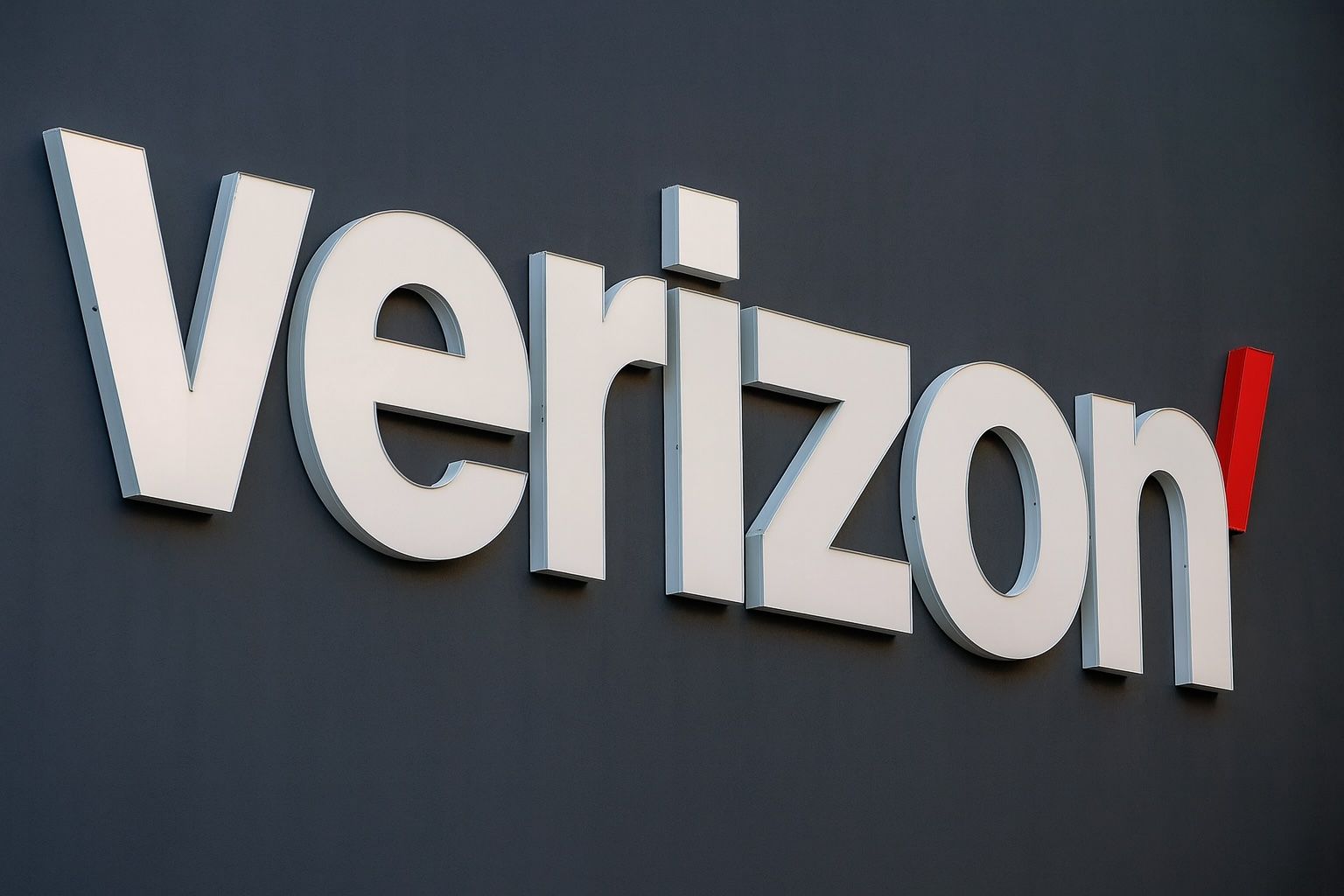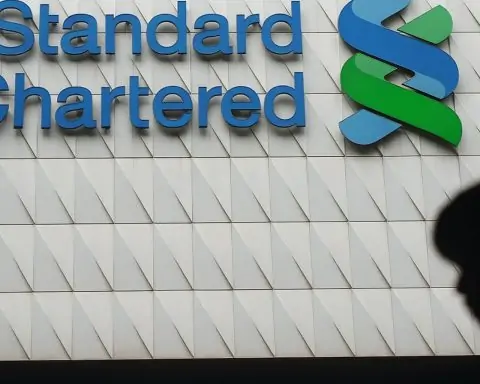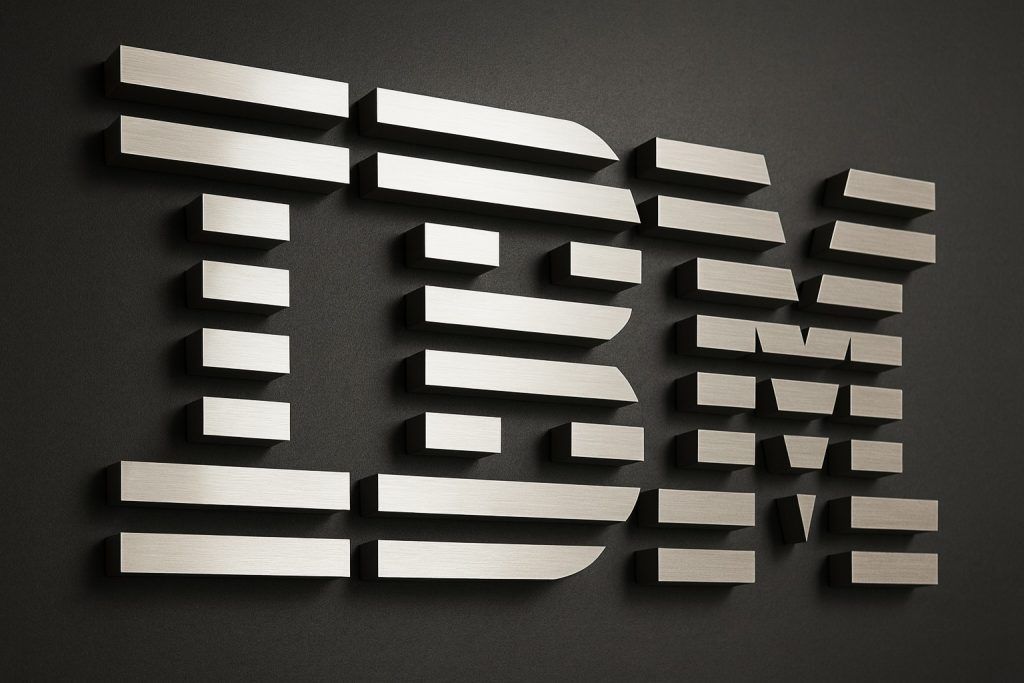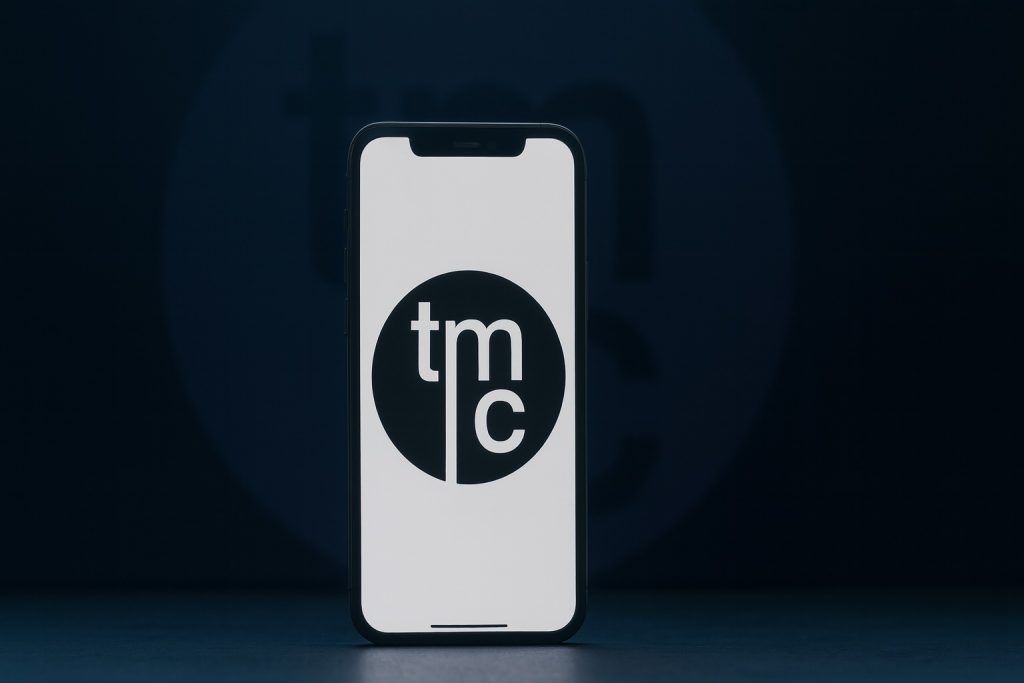- Stock Price: VZ trades near $40 as of Oct 13, 2025 [1], down from about $43.7 on Oct 3 [2]. Shares plunged ~3% on Oct 6 when former PayPal CEO Dan Schulman was announced as Verizon’s new CEO [3].
- Leadership & Deals: Schulman took over immediately (Vestberg became special advisor) [4]. Verizon also agreed to buy fixed-wireless ISP Starry (announced Oct 8) [5], and is awaiting FCC approval on its $20 billion acquisition of Frontier Communications [6].
- Dividends & Finances: Verizon raised its quarterly dividend 1.8% to $0.69 (Sep. 2025), its 19th consecutive annual increase [7], yielding over 6%. Q2 2025 revenue was $34.5 B (+5.2% YoY), net income $5.1 B (GAAP EPS $1.18) and free cash flow guidance was hiked to $19.5–20.5 B [8]. The stock’s forward P/E is only ~10× (below the ~17× telecom average) [9]. Credit ratings remain strong (Fitch A–) despite high debt [10].
- Analyst Sentiment: Wall Street is cautiously positive. There are effectively no “sell” ratings, and the median price target is around $48 [11]. Major banks have targets in the upper $40s to low $50s (RBC $46, JPM $49, Goldman $52) [12]. Fitch’s A– rating signals confidence in Verizon’s cash flow even as it bears heavy spectrum and merger debt.
- Industry Context: AT&T is boosting growth with bundled fiber+wireless plans (Q1 2025 added 324K net phone subs [13]) and buying fiber assets. T-Mobile is rapidly expanding satellite coverage – on Oct. 1 it said its SpaceX partnership now supports WhatsApp, Google Maps and X in dead zones [14] – and has appointed Srini Gopalan as its new CEO [15]. Cable operators (Comcast, Charter) continue to siphon wireless customers via MVNO deals on Verizon’s network [16].
Stock Price & Recent Moves
Verizon’s stock has been volatile in recent days. After trading around $43.7 on Oct 3 [17], VZ stock fell on the surprise CEO announcement. Reuters reported Verizon shares were down 3% in early Oct 6 trading [18], and by Oct 7 the stock was roughly 5% lower than before the news. As of Oct 13 the price is about $40.0 [19]. Overall, VZ has underperformed its sector: a recent analysis noted VZ is down ~5% over the past year vs. ~+26% for the telecom industry, trailing peers (AT&T +23%, T-Mobile +7% in the same period) [20]. This pullback partly reflects investor uncertainty amid the leadership change and heavy spending on network buildout. However, trading volumes remain healthy (3-month avg ~89M shares [21]) and institutional interest (Vanguard, etc.) suggests many see value at these levels.
Investor Sentiment & Analyst Outlook
After the CEO shake-up, investors showed mixed reactions. On the one hand, some see upside in Verizon’s growth initiatives. The stock’s low valuation and rich dividend attract income-oriented funds [22]. Simply Wall Street even projects a DCF fair value near $135 (a 68% premium) [23] – highlighting how under-appreciated some analysts believe VZ is. On the other hand, Wall Street notes the high leverage and capex risks. Many analysts have Neutral/Hold ratings; UBS and KeyBanc keep it sector-weight. The median price target around $48 [24] implies only modest near-term upside. That said, several firms have recently raised targets (RBC, JPM, Goldman) citing stronger free cash flow and cost efficiency prospects [25].
Expert Commentary:
- Dan Schulman (new CEO): “We must drive financial results that exceed current market expectations.” [26] (Schulman emphasized aggressive financial targets in his employee memo).
- Joe Russo (EVP, Verizon Networks): On the Starry deal, Russo said Starry’s tech is “less expensive to build, quicker to deploy” and will “accelerate our fixed wireless access capabilities, giving millions of new customers a powerful and affordable broadband option.” [27].
Latest News & Corporate Developments
CEO Change: On Oct 6, Verizon unexpectedly replaced CEO Hans Vestberg with Dan Schulman (former PayPal CEO) [28]. Vestberg stays on as a board advisor through 2026. The surprise timing and Schulman’s mandate to improve customer experience and exceed targets has been a market focus [29] [30]. In Vestberg’s note to employees, he highlighted Verizon’s big investments (C-band spectrum, Frontier deal) as positioning the company for future growth [31].
Acquisitions & Growth Initiatives: Verizon continues building its fiber and 5G footprint. In late September a Bloomberg report said VZ is negotiating to buy EchoStar’s AWS-3 wireless spectrum [32], which would boost its 5G capacity. On Oct 8 Verizon announced a definitive deal to acquire Starry – a fixed-wireless broadband provider in urban apartments [33]. According to Verizon, the Starry acquisition will double its fixed wireless customer base to ~8–9 million and extend service to ~90 million households by 2028 [34]. This complements Verizon’s pending Frontier Communications purchase (2.2M fiber subs) approved by the FCC in May; Verizon agreed to scrap some diversity programs to secure that approval and will soon integrate Frontier’s network [35] [36]. The overall push into rural fiber (Frontier) and urban fixed wireless (Starry) aims to solidify Verizon’s broadband scale.
Regulatory/Other News: Sen. Marsha Blackburn (R-TN) demanded on Oct 10 that CEOs of Verizon, AT&T and T-Mobile disclose any receipt of congressional subpoenas for phone data in a Jan. 6 probe [37]. While not company-specific, this highlights ongoing scrutiny of telecom data privacy. Separately, Reuters noted on Oct 10 that a U.S. senator has sought telecom firms’ records in the Jan. 6 investigations (including Verizon’s) [38]. In earlier telecom news: The S&P 500 and Nasdaq reached record highs on Oct 7 (driven by AI stocks) – a positive overall market backdrop, though Verizon itself saw only a mild uptick [39].
Industry & Competitive Context
Verizon operates in a saturated U.S. wireless market dominated by the “Big Three” (VZ, AT&T, T-Mobile) plus growing pressure from cable operators. Each competitor has recent initiatives:
- AT&T (T): Focuses on bundle tactics. In early 2025, AT&T reported stronger-than-expected subscriber growth by bundling fiber and 5G plans [40]. It also grew Q2 revenues ~3.5% and is acquiring Lumen’s fiber business for $5.75B [41], signaling a shift toward broadband. Barclays recently downgraded AT&T, noting its premium valuation vs Verizon [42]. AT&T remains a formidable rival with its own fiber expansion and leveraged business services.
- T-Mobile (TMUS): Continues to innovate in satellite and 5G. Its SpaceX-Starlink partnership launched expanded texting/data coverage in dead zones; as of Oct 1 this network now supports apps like WhatsApp, Maps and X [43]. T-Mobile also announced a new CEO (Srini Gopalan, effective Nov 1) to navigate intense competition [44]. T-Mo still leads in subscriber growth, but VZ emphasizes network quality and enterprise services as counters.
- Cable Operators (Comcast, Charter): Both offer wireless plans via Verizon’s network. Analysts point out Comcast/Charter MVNO offerings have been stealing postpaid subscribers from Verizon’s base [45]. The Frontier acquisition is partly aimed at reclaiming some of these broadband customers in rural areas.
- Satellite & Space: A growing threat/adjacency is low-earth orbit. T-Mobile’s satellite phone plan has drawn ~1.8M preregistrations (20% from Verizon/AT&T customers) [46]. Verizon and AT&T have petitioned the FCC to limit satellite-cellular power (citing interference concerns) [47]. Verizon itself is not in a satellite network, but is watching closely. (Separately, Verizon-backed AST SpaceMobile’s stock recently jumped on a wireless deal – underlining how space-based connectivity trends affect the sector [48].)
Overall, Verizon must contend with aggressive pricing and new tech from T-Mobile, fiber builds by AT&T, and cable bundles, even as it leverages its industry-leading spectrum assets.
Fundamental Analysis
Verizon’s financials show steady, if unspectacular, growth. Its forward P/E of ~10× is low, reflecting investor caution and heavy capital spending [49]. The dividend is a standout – raised for the 19th year and yielding over 6% [50], it attracts yield-seeking investors. On the income statement, analysts note telecom service revenue (wireless + wireline) has only low-single-digit growth; Q2 saw wireless service rev +2.2% [51]. Business (enterprise) revenue even dipped slightly. However, Verizon’s enormous investment in 5G (C-Band spectrum, small cells) and fiber results in high depreciation and CapEx. Free cash flow is strong – Verizon raised its FCF outlook to ~$19.5–20.5 B for 2025 [52] – but much of that is earmarked to pay down debt and fund network.
The balance sheet is leveraged (Spectrum and acquisitions have driven gross debt above $100 B) yet analysts note cash flow is predictable enough to support ratings. Indeed, Fitch maintains VZ at A– (low risk of default) [53]. Interest coverage is ample. The company’s recent actions (FCF guidance increase, dividend hike) suggest management prioritizes financial stability. The stock trades well below peers by valuation: as TS2.Tech observed, VZ’s DCF-based fair value was once estimated ~$134 – far above the current price [54] – implying that some see the market mispricing Verizon (perhaps not fully accounting for its stable cash flows and high yield).
On the earnings front, analysts forecast modest growth. For example, one report notes 2025 EPS estimates were trimmed slightly (to ~$4.69) while 2026 estimates inched up [55]. This mixed revision trend indicates skepticism about near-term catalysts, but a belief that longer-term prospects (enterprise IoT, 5G, fiber broadband) could lift earnings later.
Technical Analysis
Technically, Verizon’s chart shows it trading near key support levels. After pulling back from early-Oct highs around $44, VZ has hovered near the $40 level. (Its 50-day moving average is roughly in the low $40s range.) Some momentum indicators have turned bearish: e.g. the RSI has dipped into oversold territory (TipRanks notes RSI ~27, a “buy” signal [56]), and the MACD is negative [57]. This suggests a potential short-term bounce may be due, but also warns that a break below $39–$40 could trigger further declines. Given Verizon’s strong dividend, many technical traders watch for support and yield signals; at current prices the 6%+ yield could provide a floor under the stock.
Note: As of Oct 13, no major chart “golden cross” or bearish “death cross” events are evident – the stock is essentially range-bound between its recent low ~$37.6 (52-week) and high ~$47.4 (52-week). A close above $44–45 on strong volume would be a bullish sign of resumed uptrend, whereas a breakdown under $39 might signal a deeper correction.
Short-Term & Long-Term Outlook
In the short term (weeks–months), investors will be watching two main issues: how the market digests the new CEO and whether growth initiatives bear fruit. The upcoming Q3 earnings (late Oct 2025) will be an early test of Schulman’s leadership and Frontier/Starry integration progress. Analysts’ price targets in the $46–52 range [58] suggest roughly 15–30% upside from current levels if those catalysts play out. Conversely, any signs that subscriber growth is weaker than expected (as happened in Q1 2025) or that integration costs are higher could keep a lid on the stock.
In the long term (1–3+ years), Verizon’s prospects hinge on execution of its strategy. If the Frontier purchase and Starry deal succeed in expanding Verizon’s fiber and fixed-wireless footprint, and if 5G/IoT rollouts drive new revenue (enterprise 5G slicing, private networks, etc.), the company could generate the steady growth needed to re-rate the stock higher. TS2.Tech notes that with its robust dividend and cash flow, Verizon “could offer investors a balanced mix of income and potential capital appreciation” [59]. Under this view, even a modest P/E expansion from 10× toward the peer average (say 15×–17×) over time would lift the stock substantially (especially on higher earnings). However, risks remain: heavy debt means Verizon must maintain disciplined spending, and fierce pricing competition from T-Mobile and cable bundles will cap margins.
Forecast Summary: Analysts’ consensus suggests a moderately bullish tilt: most see VZ returning to the mid-$40s once short-term uncertainty fades [60]. Over the next 6–12 months, targets imply a 20–30% rally if plans go well. Five years out, the story depends on industry evolution: if 5G and broadband demand explode as hoped, Verizon (with its spectrum and new fiber assets) could outperform. If not, VZ may languish near current levels as a high-yield utility. In any case, the stock is likely to remain of interest to income investors – at a >6% yield [61], even a small price recovery would give solid total returns.
Bottom Line: After a rocky week of leadership changes and deal news, Verizon stands at a crossroads. Its dividend and cash flow are stronger than ever [62] [63], yet its stock is priced for caution. Key factors to watch: Sprint results (now T-Mobile’s), AT&T’s fiber rollouts, and any early hints from Schulman on strategy. As one analyst put it, Verizon’s future is “not without risks”, but it also has “billions [of] infrastructure builds” ahead [64]. For now, investors will be weighing Verizon’s high yield and strategic bets against near-term execution challenges.
Sources: Author’s analysis based on Verizon press releases, TS2.Tech research, and news from Reuters, Morningstar, Zacks, and others [65] [66] [67] [68] [69] [70] [71] [72] [73] [74] [75] [76].
References
1. www.reuters.com, 2. ts2.tech, 3. www.reuters.com, 4. ts2.tech, 5. www.verizon.com, 6. ts2.tech, 7. ts2.tech, 8. ts2.tech, 9. ts2.tech, 10. ts2.tech, 11. ts2.tech, 12. ts2.tech, 13. www.reuters.com, 14. www.reuters.com, 15. www.reuters.com, 16. ts2.tech, 17. ts2.tech, 18. www.reuters.com, 19. www.reuters.com, 20. www.nasdaq.com, 21. www.reuters.com, 22. ts2.tech, 23. ts2.tech, 24. ts2.tech, 25. ts2.tech, 26. www.reuters.com, 27. www.verizon.com, 28. ts2.tech, 29. ts2.tech, 30. www.reuters.com, 31. www.reuters.com, 32. www.reuters.com, 33. www.verizon.com, 34. www.verizon.com, 35. ts2.tech, 36. ts2.tech, 37. www.reuters.com, 38. www.reuters.com, 39. www.reuters.com, 40. www.reuters.com, 41. ts2.tech, 42. ts2.tech, 43. www.reuters.com, 44. www.reuters.com, 45. ts2.tech, 46. ts2.tech, 47. ts2.tech, 48. ts2.tech, 49. ts2.tech, 50. ts2.tech, 51. ts2.tech, 52. ts2.tech, 53. ts2.tech, 54. ts2.tech, 55. www.nasdaq.com, 56. www.tipranks.com, 57. www.tipranks.com, 58. ts2.tech, 59. ts2.tech, 60. ts2.tech, 61. ts2.tech, 62. ts2.tech, 63. ts2.tech, 64. ts2.tech, 65. www.reuters.com, 66. ts2.tech, 67. ts2.tech, 68. ts2.tech, 69. ts2.tech, 70. ts2.tech, 71. www.reuters.com, 72. www.verizon.com, 73. www.reuters.com, 74. www.reuters.com, 75. www.reuters.com, 76. www.reuters.com










